How to Grow a Mimosa Tree From Seeds
- September 26, 2024
- 0 comment
Mimosa trees (Albizia julibrissin), also known as silk trees, are known for their delicate, fern-like leaves and fluffy, fragrant flowers that attract pollinators like bees, butterflies, and hummingbirds. Native to Asia, these fast-growing trees have become a favorite in many gardens worldwide due to their exotic look and ability to thrive in various soil conditions.
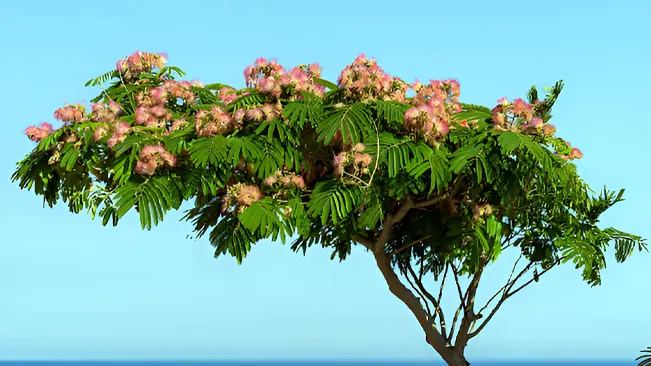
If you’re looking to add a touch of elegance to your garden by growing a mimosa tree from seeds, this guide will walk you through the entire process, from seed collection to nurturing the tree into a flourishing beauty.
List of How to Grow a Mimosa Tree From Seeds:
- Seed Collection: Finding the Right Seeds
- Preparing the Seeds: Scarification and Stratification
- Choosing the Right Planting Time and Location
- Planting the Seeds: Step-by-Step Process
- Caring for Mimosa Seedlings
- Transplanting Mimosa Seedlings
- Long-Term Care for Your Mimosa Tree
Seed Collection: Finding the Right Seeds
The first step in growing a mimosa tree from seeds is obtaining high-quality seeds. Mimosa trees typically produce seed pods in late summer to early autumn. These pods resemble pea pods, with each pod containing several seeds. Here’s how to collect them:
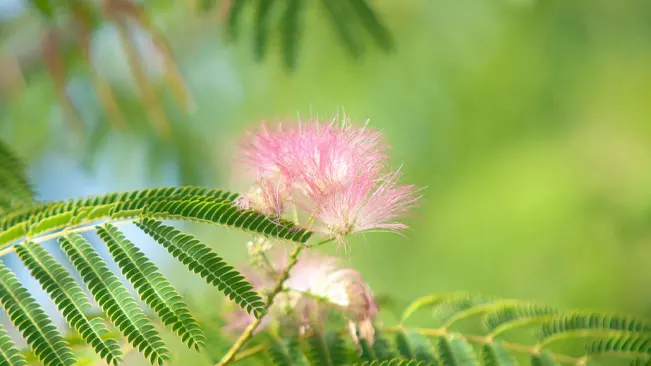
- Timing: Wait for the seed pods to mature on the tree. The pods will turn brown and dry up when they are ready for harvesting.
- Harvesting the Pods: Once the pods are dry, carefully remove them from the tree. Avoid collecting green or unripe pods, as their seeds are less likely to germinate.
- Extracting the Seeds: Gently open the dry pods and extract the seeds. These seeds are usually small, hard, and brown or dark green. Store them in a dry, cool place until you’re ready to plant.
Preparing the Seeds: Scarification and Stratification
Mimosa seeds have a tough outer shell, which can make germination slow or difficult if left untreated. To improve the germination rate, you will need to scarify (damage the seed coat) and, in some cases, stratify (simulate winter conditions) the seeds.
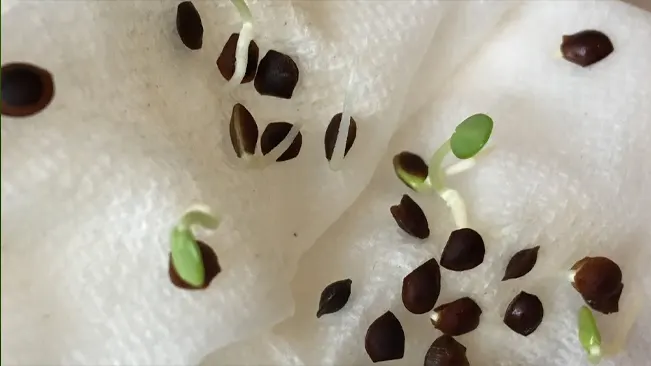
Scarification Methods:
- Hot Water Method: Boil water and let it cool slightly. Place the seeds in the water and let them soak for about 24 hours. This process softens the hard seed coat, making it easier for the seed to germinate.
- Mechanical Scarification: Use sandpaper or a nail file to gently scratch the surface of the seed coat. Be careful not to damage the seed inside—just enough to break through the outer layer.
- Acid Scarification (Optional): Some gardeners use sulfuric acid to break down the seed coat, but this method requires careful handling and is not typically recommended for beginners.
Stratification (Optional):
If you live in a region with mild winters, you may also want to stratify your seeds by simulating cold conditions:
- Soak the seeds for 24 hours.
- Place them in a plastic bag with a damp paper towel.
- Store the bag in the refrigerator for about 4 to 6 weeks. This cold treatment mimics winter conditions and helps the seeds break dormancy.
Choosing the Right Planting Time and Location
Mimosa trees are hardy and can tolerate a variety of growing conditions, but timing and location are key to successful growth.
Best Planting Time:
- Mimosa seeds should be planted in the spring, after the last frost has passed. Mimosa trees thrive in warm weather and can struggle in colder climates.
Ideal Location:
- Sunlight: Choose a location that receives full sunlight. Mimosa trees need at least 6 to 8 hours of sunlight per day to grow strong and healthy.
- Soil: Mimosa trees are not fussy about soil types, but they do best in well-draining soil. Avoid areas with heavy clay or waterlogged soil.
- Space: These trees can grow up to 20-40 feet tall and spread up to 30 feet, so ensure there is ample space for your mimosa to expand.
Planting the Seeds: Step-by-Step Process
Now that your seeds are scarified and stratified, you’re ready to plant. Follow these steps for the best results:
Step-by-Step Planting Process:
Prepare the Soil
Loosen the soil in the planting area to a depth of 12 inches. Mix in some compost or organic matter to improve soil fertility.
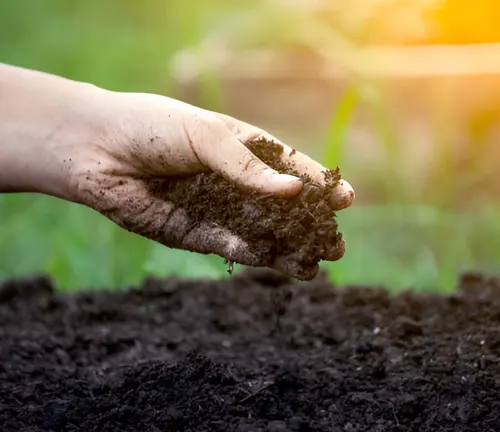
Create Planting Holes
Dig small holes about ½ inch deep, spaced 2-3 inches apart if planting multiple seeds. Mimosa seeds do not need to be planted deep, as they germinate best near the surface.
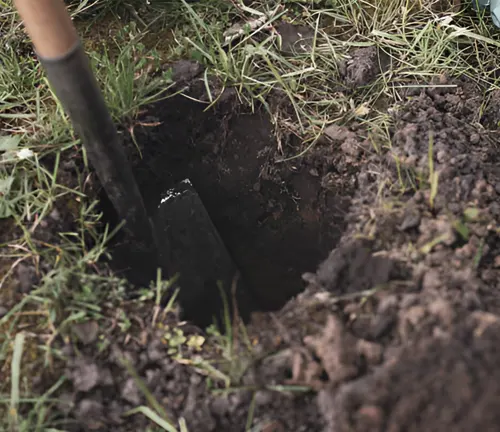
Plant the Seeds
gently place one mimosa seed into each prepared hole, ensuring it’s positioned about ½ inch deep, then cover it lightly with a thin layer of soil, taking care not to compact the soil too tightly so the seed can breathe and easily sprout.
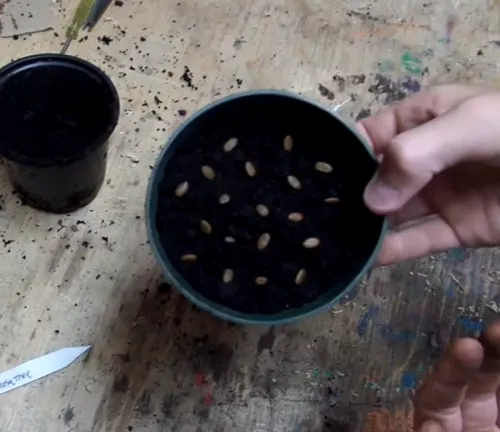
Watering
Water the area gently but thoroughly. Keep the soil consistently moist, but avoid overwatering, as soggy soil can cause the seeds to rot.
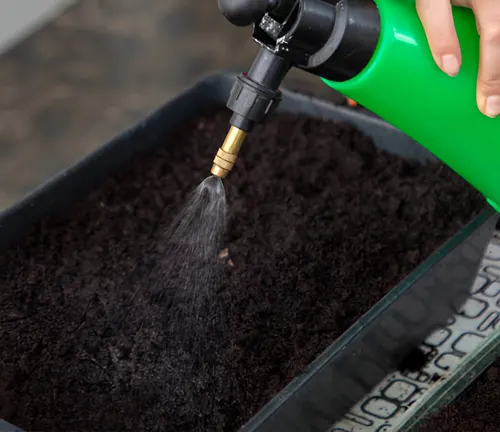
Mulching
Apply a light layer of mulch around the planting area to retain moisture and regulate soil temperature. Mulch also helps prevent weeds from competing with your seedlings for nutrients.
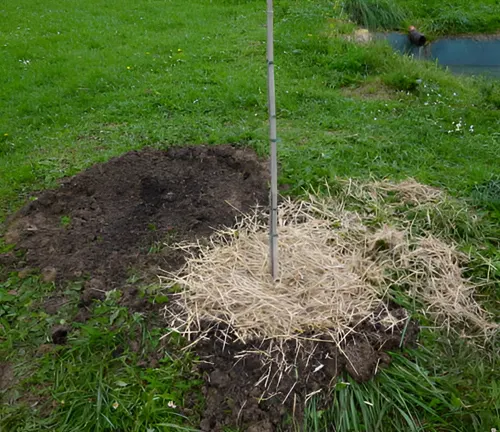
Caring for Mimosa Seedlings
Once your seeds have germinated and tiny seedlings start to appear, it’s time to focus on nurturing them. This stage is crucial for the development of a healthy tree.
Watering:
- Frequency: Water the seedlings regularly, especially during dry spells. However, mimosa trees are somewhat drought-tolerant once established, so take care not to overwater.
- Method: Water at the base of the seedlings to avoid wetting the leaves, which can lead to fungal problems.
Fertilizing:
- Type: Mimosa trees typically don’t require much fertilizer, but a balanced, slow-release fertilizer can help during the seedling stage.
- Frequency: Apply fertilizer once in the spring and again in early summer for optimal growth.
Protecting Seedlings:
- Pests: Mimosa seedlings can be vulnerable to pests such as aphids or caterpillars. Inspect your plants regularly and use insecticidal soap or neem oil if pests become a problem.
- Weed Control: Keep the area around your seedlings free from weeds. Weeds can steal nutrients and water from your young plants, hindering their growth.
Transplanting Mimosa Seedlings
After your mimosa seedlings have grown to about 6-8 inches in height, it’s time to transplant them to their permanent location.
When to Transplant:
- The best time to transplant is during the spring, after the last frost and when temperatures are consistently warm.
Transplanting Steps:
- Prepare the Site: Dig a hole twice as wide and as deep as the seedling’s root ball.
- Gently Remove the Seedling: Carefully dig around the seedling, taking care not to damage the roots.
- Plant the Seedling: Place the seedling in the hole, ensuring the root ball is level with the ground surface. Fill in the hole with soil and gently firm it around the roots.
- Watering: Water the newly transplanted tree thoroughly to help it establish roots in its new location.
Long-Term Care for Your Mimosa Tree
As your mimosa tree matures, it requires minimal care, but a few practices will keep it healthy and thriving.
Watering:
- Frequency: Mature mimosa trees are drought-tolerant and only require watering during extended dry periods.
- Deep Watering: Water deeply at the base of the tree to encourage deep root growth.
Fertilization:
- Established mimosa trees generally don’t need much fertilizer. If your tree is growing slowly, you can apply a balanced fertilizer in early spring.
Pruning:
- Time: Prune in late winter or early spring before new growth begins.
- Method: Remove dead, damaged, or diseased branches. Thinning out crowded branches can improve air circulation, reducing the risk of fungal infections.
Pest and Disease Management:
- Common Pests: Watch out for webworms, aphids, and scales. If infestation occurs, treat with appropriate insecticides or natural remedies.
- Fungal Diseases: Mimosa trees can be susceptible to fungal wilt, especially in humid climates. Regular pruning and proper watering practices can help prevent this disease.
Conclusion
Growing a mimosa tree from seeds can be a rewarding and enjoyable process for any gardener. With the right preparation, care, and attention, you’ll have a stunning tree that adds beauty and biodiversity to your garden. Whether you’re planting it for its showy pink blooms or to attract pollinators, the mimosa tree is a resilient, fast-growing species that requires minimal long-term care. Just be sure to give it plenty of sunlight, water, and space to flourish, and you’ll soon have a gorgeous addition to your landscape!
Frequently Asked Questions (FAQ)
- How long does it take for mimosa seeds to germinate?
Mimosa seeds typically take between 7 to 14 days to germinate, depending on the temperature and soil conditions. Warmer climates usually lead to faster germination. - Do mimosa seeds need special treatment before planting?
Yes, mimosa seeds have a hard outer shell that benefits from scarification (scratching or soaking in warm water) to improve germination rates. Some gardeners also stratify the seeds by chilling them to simulate winter conditions. - What type of soil is best for growing a mimosa tree?
Mimosa trees thrive in well-draining soil and can tolerate a variety of soil types, including sandy or loamy soils. While they can adapt to poor soil conditions, adding organic matter or compost improves their growth. - How often should I water a mimosa tree?
Young mimosa trees need regular watering to establish their roots, especially during dry spells. Once established, mimosa trees are drought-tolerant and only need occasional deep watering during prolonged dry periods. - Can I grow a mimosa tree indoors or in a container?
Mimosa trees can be started in pots, but due to their fast growth and large size, they will eventually need to be transplanted outdoors into the ground for optimal growth and health. - When is the best time to plant mimosa seeds?
Mimosa seeds should be planted in the spring, after the last frost has passed. This allows the seedlings to grow during warm months and establish before the winter season. - How tall does a mimosa tree grow?
Mimosa trees can grow to a height of 20 to 40 feet, with a wide canopy that can spread up to 30 feet. Make sure to plant them in an area with ample space to accommodate their growth. - Are mimosa trees resistant to pests and diseases?
Mimosa trees can be susceptible to pests like aphids and webworms, as well as fungal diseases like fusarium wilt. Regular inspection and care, such as pruning and pest control, help keep the tree healthy. - Can I grow mimosa trees from store-bought seeds?
Yes, mimosa seeds are widely available for purchase. However, collecting seeds from a mature mimosa tree ensures freshness and better germination rates. - Are mimosa trees invasive?
In some regions, particularly in the southern United States, mimosa trees are considered invasive due to their ability to spread quickly and outcompete native plants. Be sure to check local regulations before planting.
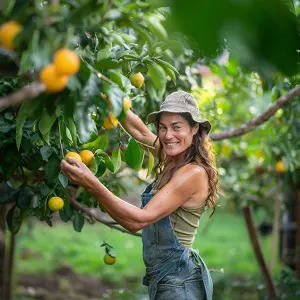
Emma Hudson
Forestry AuthorEmma's experience in farming shapes her detailed guides on gardening and farming tools, providing practical, actionable advice grounded in real-world experience. Her work targets both newcomers and experienced farmers, aiming to enhance their practices with a mix of traditional wisdom and modern techniques. By making complex agricultural concepts accessible, Emma's guides serve as valuable tools for those navigating the challenges of contemporary farming, offering strategies for sustainable success.

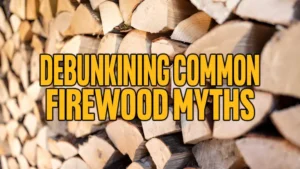
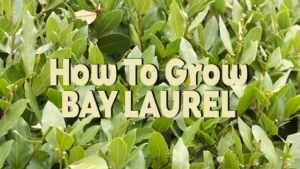


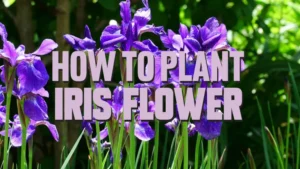

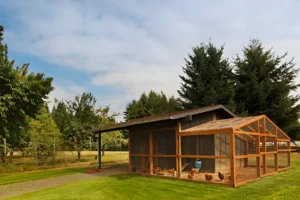


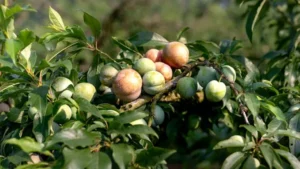


Leave your comment